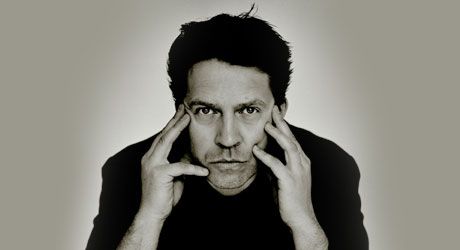Andsnes’ bracing intelligence proves well-suited to Beethoven
For the Chicago leg of his long-running Beethoven Journey series, which has been focused on the composer’s concertos, Leif Ove Andsnes brought to Symphony Center his first all-Beethoven recital—a well thought-out program of solo masterworks. The Norwegian pianist is turning his full attention to the composer in a reflective and well-considered manner that offered rewards for concertgoers as well as his league of followers.
The opener on Sunday’s matinee was the Sonata No. 11, Opus 22 – early Beethoven dating from 1800 and harking back more to the Classical period and less to the age of storm-and-stress to come. This suited the refined touch of the Norwegian artist, who always plays with elegance and control.
His way with music of this style is accurate although somewhat aloof. Singing lines emerge cleanly and delicately but there is no lack of heft in the darker sections– for example in the trio of the Menuetto and in the rigorous fugue-like finale. Andsnes demonstrated a fine intellectual grasp of the dynamic structure of the piece though perhaps less of its emotional trajectory. The slow second movement was projected with not so much inwardness as outward perfection, melody and sensibility.
The Sonata No. 28, Op.101, is one of the earliest examples of Beethoven’s subjective and experimental late period works. The composer demands “innermost feeling” in the first movement, which also was given an emotionally cool, pristine performance, lyrical yet firmly pointed.
In the second movement a fierce opening and explosive outbursts announce the later Beethoven. For this section the pianist kept the lines clear and the dynamics full-bodied. The third movement began reflectively and merged into superbly realized pyrotechnics, which punctuated the on-rushing forward impulse and carried the work to a powerful conclusion.
The Six Variations on an Original Theme, Opus 34, was another thoughtful choice, reflecting Beethoven’s mastery of the variation form, which also shows up in the finale of Opus 11 and the middle section of the “Appassionata.” Andsnes nailed each variation with precision and grace.
The triumph of the evening and the one unquestionable masterpiece included was the so-called “Appassionata” Sonata No. 23, Op. 57. In the context of the other pieces on the program, this middle-period work benefited from their proximity. The raw materials were worked into a giant edifice, which was assailed by the pianist finding ideal tempos and dynamics for the composer’s purposes. Andsnes displayed even runs, vigorous swells and tonal contrasts all handled with profundity and nearly flawless technique.
The lyrical first movement was sheer pleasure, and the bold second movement displayed the fierce grandeur of the real Beethoven. After a reflective opening, the third movement embarked on its adventurous journey. The hyperkinetic finale was worth the wait, Andsnes’ Presto conclusion bringing down the house.
The two encores were tossed off elegantly: a poised Bagatelle, Op. 33, no. 1 and an effortless Allegretto from the Piano Sonata No. 22 Op. 54.
Posted in Performances





